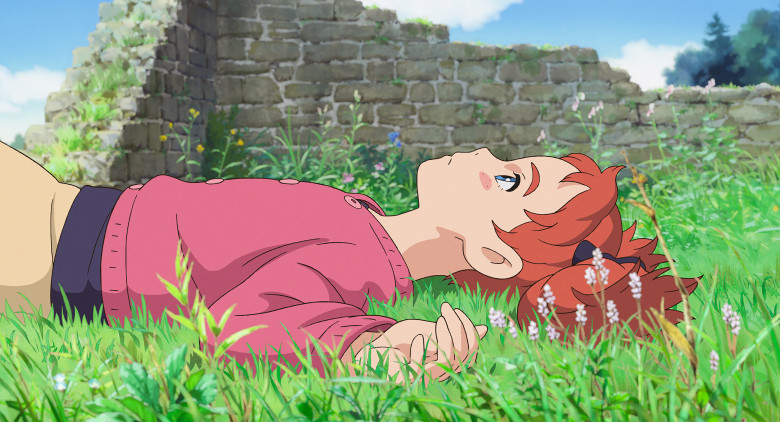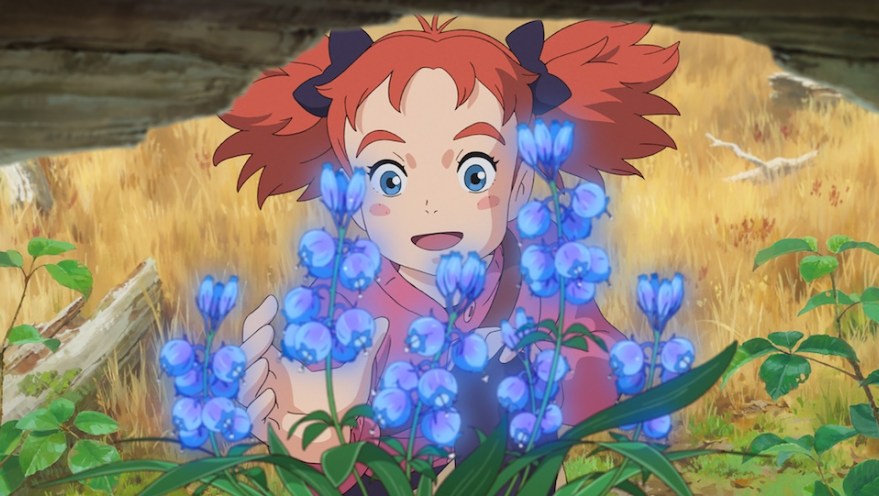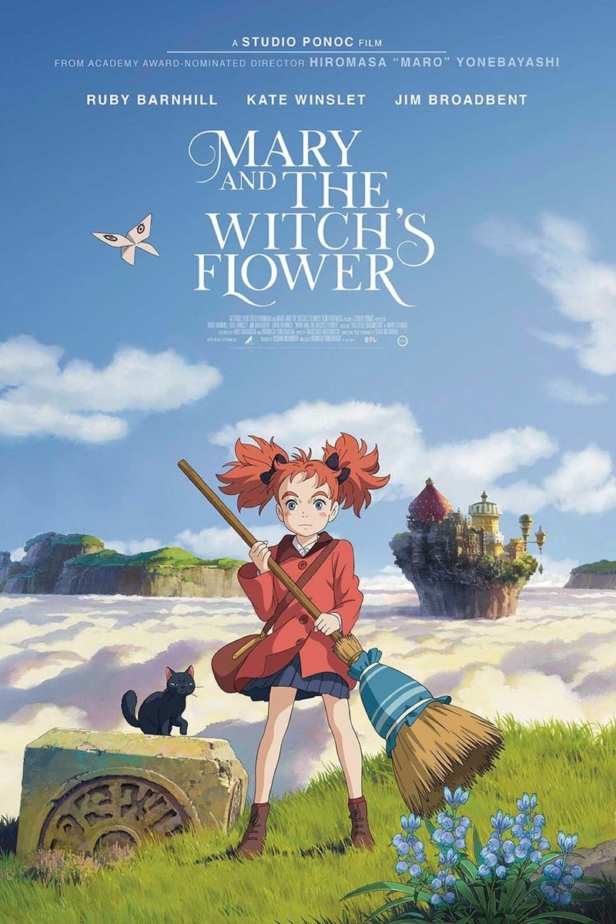Studio Ponoc takes its name from the Serbo-Croatian word ponoć, meaning midnight, the beginning of a new day. The studio is a new beginning for two ex-Studio Ghibli stalwarts, and their first film is Mary And The Witch’s Flower.
Hiromasa Yonebayashi, who was an animator at the studio for 20 years, was trusted enough to direct not one but two features for Ghibli, Arrietty and When Marnie Was There, so in teaming up with producer Yoshiaki Nishimura (The Tale Of The Princess Kaguya, Howl’s Moving Castle) they make a formidable duo with plenty of experience. For their inaugural feature they looked to a children’s story, The Little Broomstick, by British novelist Mary Stewart, perhaps best known for her Merlin trilogy and romantic thrillers featuring ‘anti-nambi-pamby’ heroines. So far, so promising.
In Mary And The Witch’s Flower a restless, headstrong girl runs off into the woods, picks a flower and finds an unruly broom that whisks her off on a dizzy adventure involving mutant animals, magic-hungry witches and a boy who needs rescuing. Hiromasa Yonebayashi explains, via a translator, why they are launching their studio with this particular tale: “I made When Marnie Was There before this and it’s about an introspective girl and her internal journey,” he says. “So, when we were bringing the first creation from Studio Ponoc into this world we wanted to make something totally opposite – action-packed, lots of emotion, fantasy focused – and so we read a lot of children’s books to find the appropriate work and came across this wonderful story.”

So, what can we read into this choice of material – will the studio build on themes of nature and feminism, will they focus solely on children’s stories? “We both made a lot of films prior to this and they were inspired by children,” Yonebayashi concedes, “so we wanted to carry on those kind of films. Both of us have small children and thought that this would be the last opportunity to make films that our own kids can enjoy right now.”
But rather than set out a mission statement this early on, the duo prefer to remain open to pick and choose their next projects. “When we were working for Studio Ghibli there were things we couldn’t realise,” admits producer Yoshiaki Nishimura, “and we always wanted to make films for children. Although at Ghibli we made films that children could enjoy, as time went on they became more grown-up in nature as those at the studio got older, and so we set up Studio Ponoc. Whether we choose protagonists of a certain gender, or use a certain animation technology, we would like to approach that on a film-by-film basis.”
Studio Ponoc was founded in 2015, at a time when it looked like we’d seen the last of Ghibli – Hayao Miyazaki had announced his retirement and the company was lying dormant, so Studio Ponoc appeared to be taking up the baton. But with Miyazaki now un-retired (again) it’ll be interesting to see what Ponoc does next. With their first feature they’ve chosen to remain faithful to the 2D, hand-drawn Ghibli style, and fans will recognise many artistic nods to favourites such as Kiki’s Delivery Service (although Mary is a very different kind of witch) and Spirited Away. “The film that directly inspired me to join Studio Ghibli,” explains Yonebayashi, “was Whisper Of The Heart, and after joining as an animator, the film I found a strong affection for was Ponyo.”

When asked about the anime he most admires, Nishimura chooses My Neighbour Totoro and Grave Of The Fireflies – both men are clearly proud of their Ghibli roots.
At the same time, they’re keen to point out that Mary And The Witch’s Flower is a new kind of magical fantasy adventure – one for modern audiences. “Magic is used in the film, but we asked ourselves how we could portray that in a different way,” says Yonebayashi. “The modern world is very judgmental, with so much information, gossip and pressure to perform that people are controlled by this pressure. Normally in films that show magic it fixes all the problems, but in The Little Broomstick magic is denied, and Mary herself tries to solve problems without using it – we wanted to empower children and show that they should rely more on themselves than outside forces.”
So what did Miyazaki think of his protégées’ new work? “Mr Miyazaki hasn’t actually seen the film yet, but he was keeping an eye on our progress and was very supportive from the start,” says Yonebayashi. “When we first launched Studio Ponoc we went to chat with him and he gave us advice and told us what to expect. When we were making films at Studio Ghibli there were lots of people all working to realise Mr Miyazaki’s ideas, so when we set up our own studio we had to find our own people and it was hard, and this delayed production on the film. Mr Miyazaki heard about this and visited us one day with some bread from his local bakery that he knew we loved. And then when we completed the film he was very happy for us.”
With the hard work of setting up the studio now behind them and a new film under their belts, Yonebayashi and Nishimura have proved themselves determined and passionate, have stepped out of the shadow of the legendary Miyazaki and can now look to the future – rumour has it they have more literary adaptations in mind, but for now they’re focused on making a few short films. Whatever direction Studio Ponoc takes next, by combining their traditional sensibilities with a modern voice there should definitely be room on the broom for more than one anime powerhouse.
Mary And The Witch’s Flower is available on DVD. Read our review here.
